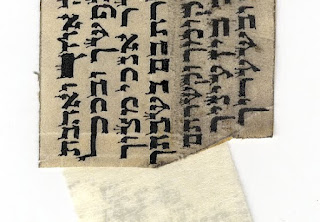Baruch Hashem I honor chumros, but .... chumros should not get out of hand, may tend to bend things a bit more important. I honor the discussions mentioned in regard to dyo and feathers, and every part was quite interesting, but .... The simple hallacha is that any kulmus is kosher for writing with (even a non kosher feather, chas vshalom . It may be gnay and not mehudar for the sofer - but doesn't invalidate the stam!!) The same regards the law of dyo - dyo doesn't need al pi din to be mutar bpicha . It is true there is a whole debate in the acharonim on the issue, and it is quite important to understand why dyo is different than klaf, batim, retzuos and gidim that must be "min hamutar b'ficha"?! [a simple terutz would be: that all types of ink/dyo used in talmudic times, never included parts from animals. so the question didn't arise]. But for fact it isn't mentioned in the talmud, rambam, tur or shulchan aruch such a rule that dyo must be min ha






.JPG)